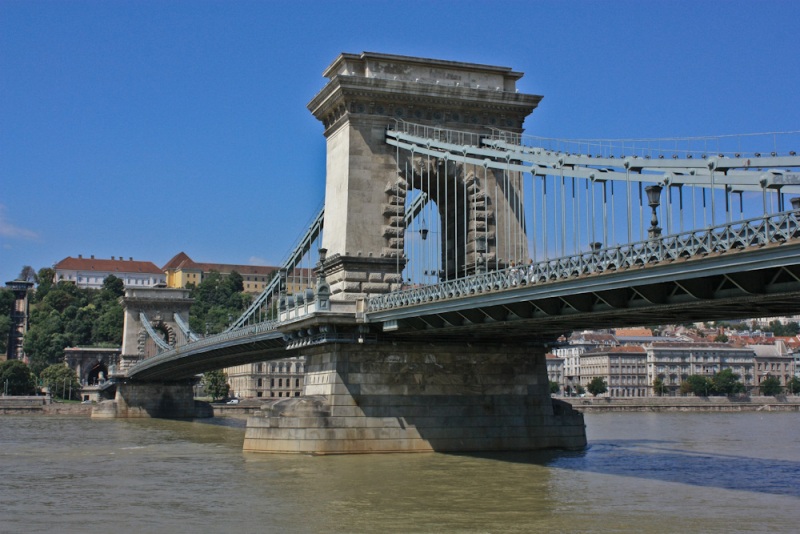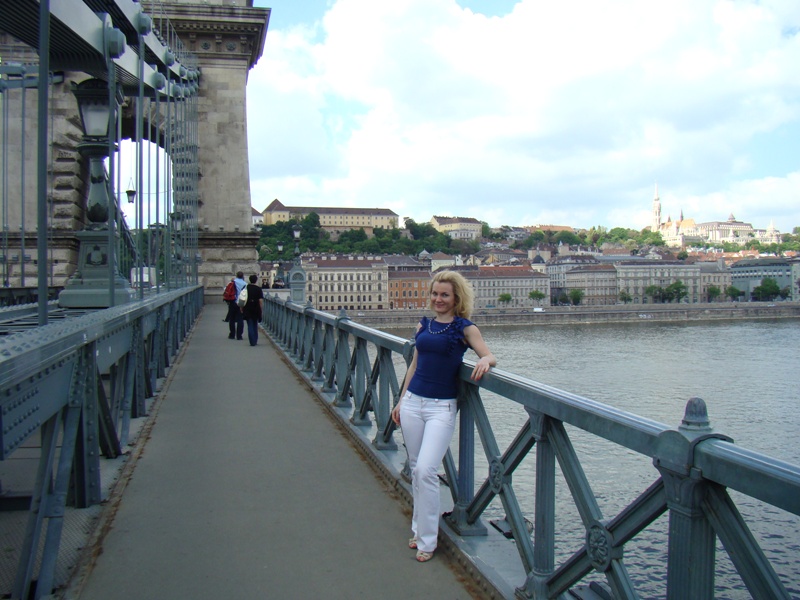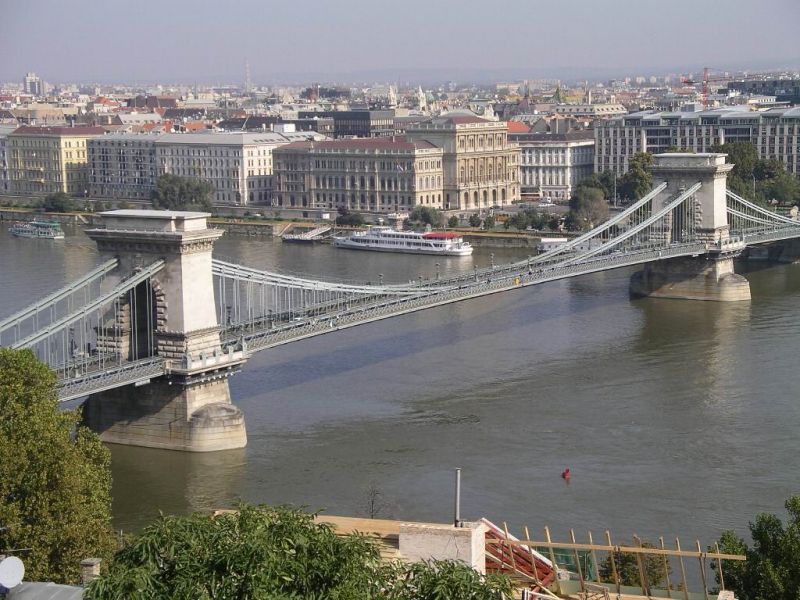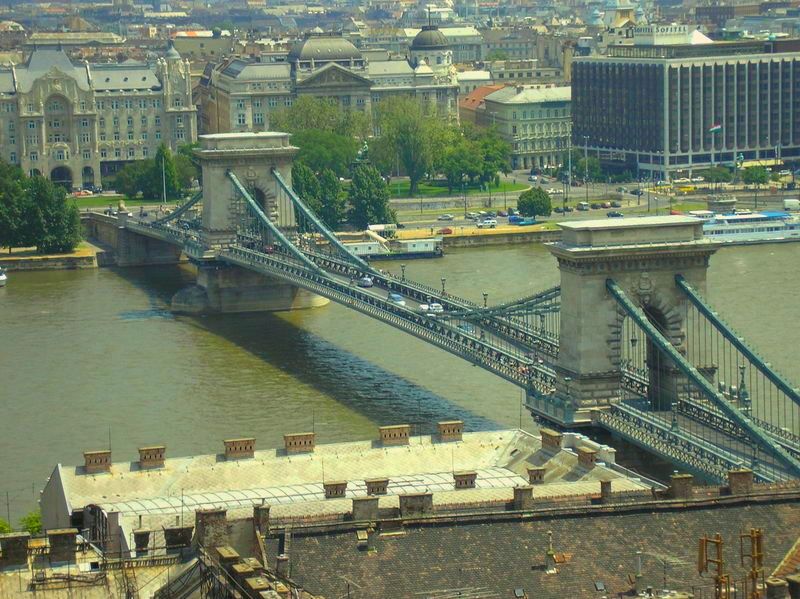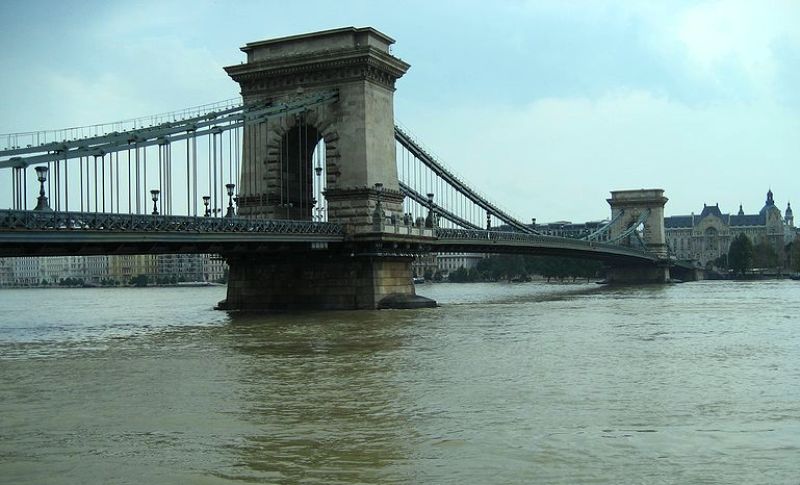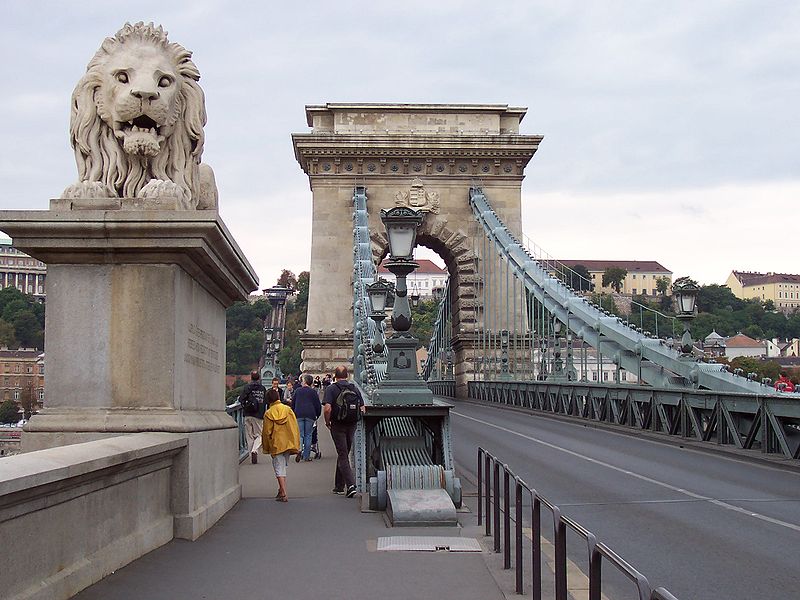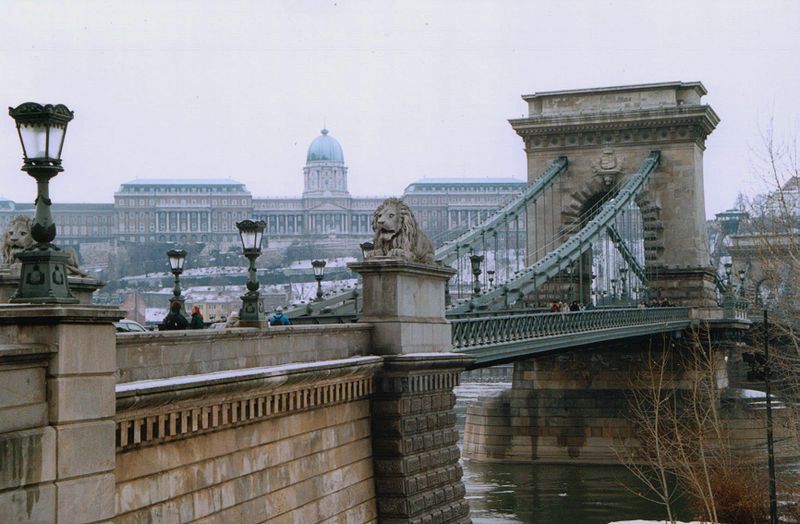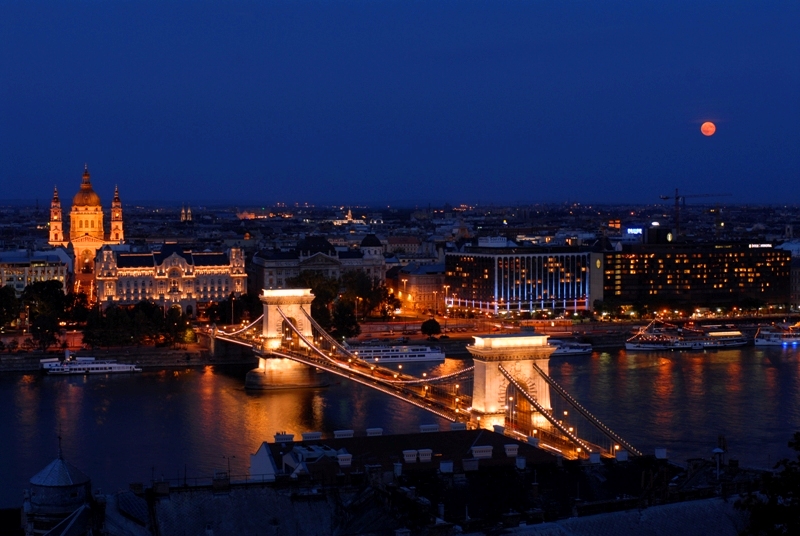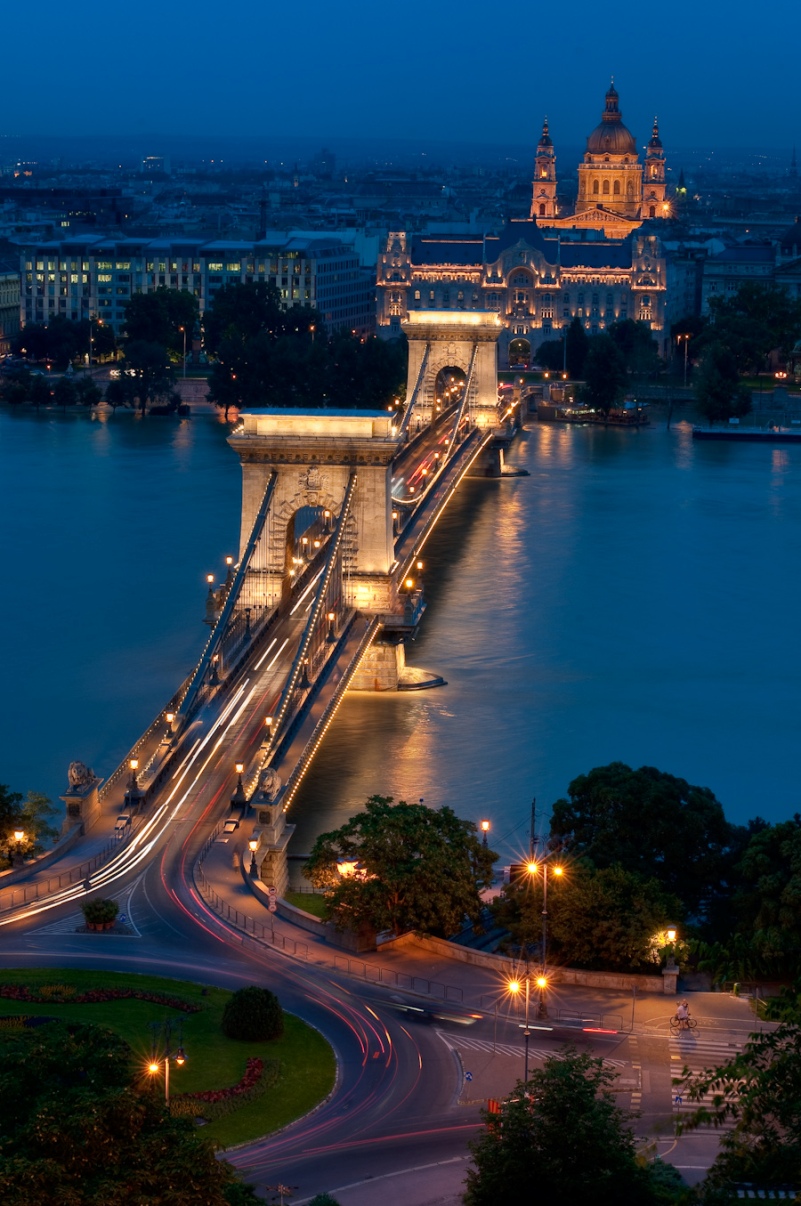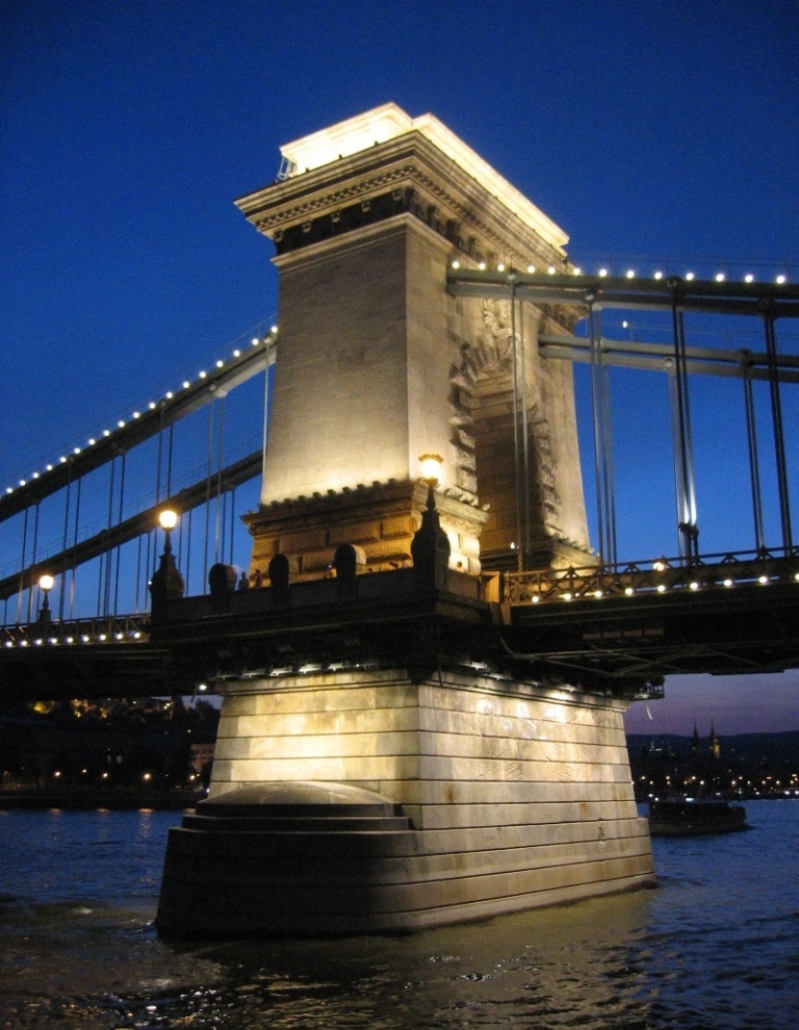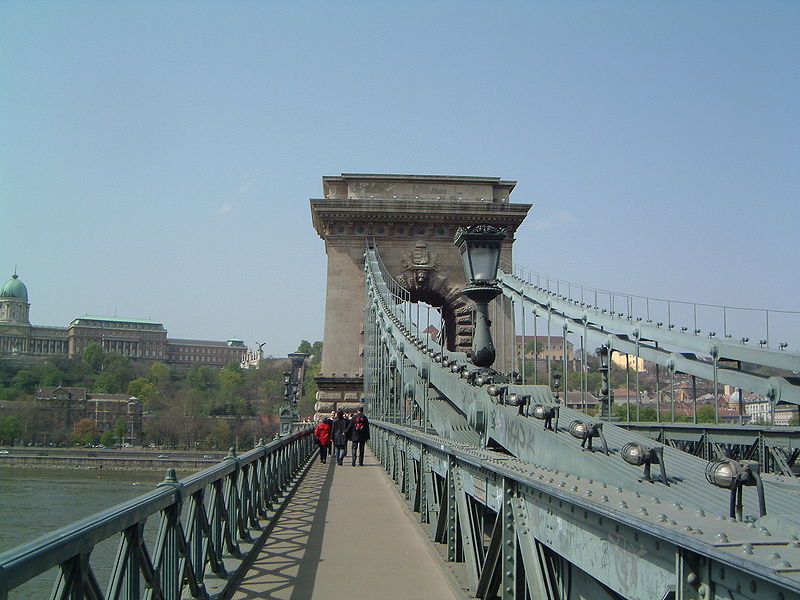| |||||||
Europe
North AmericaSouth AmericaAsiaAustralia and OceaniaAfrica |
Szechenyi Chain Bridge
Szechenyi Chain Bridge is a suspension bridge that spans the River Danube between Buda and Pest, the western and eastern sides of Budapest, the capital of Hungary. It was the first permanent bridge across the Danube in Budapest, and was opened in 1849.
Szechenyi Chain Bridge Official name Szechenyi Lanchid Carries Two road lanes Crosses Danube River Locale Budapest, Hungary Designer William Tierney Clark Design Chain, Suspension bridge Material Wrought iron and stone Total length 375 metres (1,230 ft) Longest span 202 metres (660 ft) Opened November 20, 1849
Its two ends are:
The bridge is named after Istvan Szechenyi, a major supporter of its construction. At the time of its construction, it counted as a wonder of the world. It had an enormous significance in the country's economics and life. Its decorations made of cast iron, and its construction, radiating calm dignity and balance, raised it among the most beautiful industrial monuments in Europe. It became a symbol of advancement, national awakening, and the linkage between East and West.
History The bridge was designed by the English engineer William Tierney Clark in 1839, after Count Istvan Szechenyi's initiative in the same year, with construction supervised locally by Scottish engineer Adam Clark. It is a larger scale version of William Tierney Clark's earlier Marlow Bridge, across the River Thames in Marlow, England. The bridge was opened in 1849, and thus became the first permanent bridge in the Hungarian capital. At the time, its center span of 202 m was one of the largest in the world. The pairs of lions at each of the abutments were added in 1852. The bridge was given its current name in 1898. The bridge's cast iron structure was totally updated and strengthened in 1914. In World War II, the bridge was damaged and needed to be rebuilt. The rebuilding was completed in 1949.
Comments: 0 |
|
|||||







































